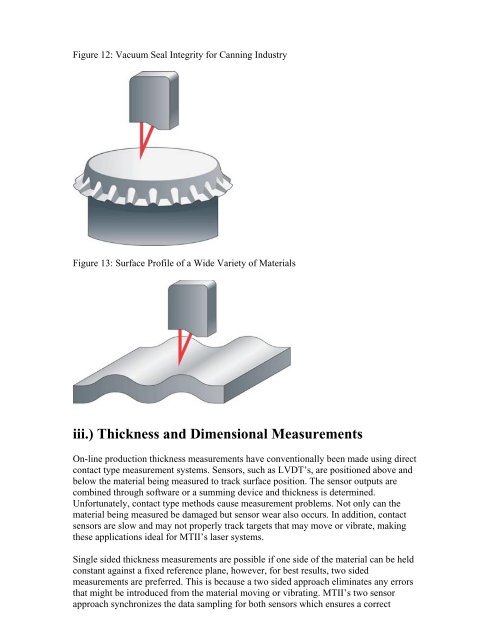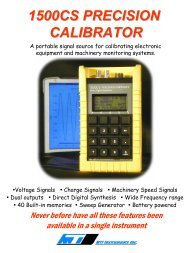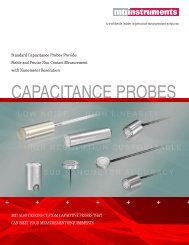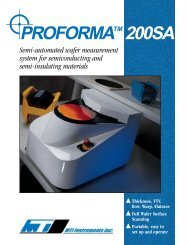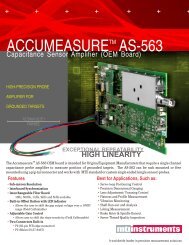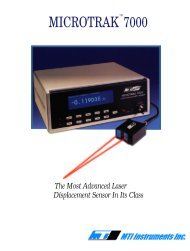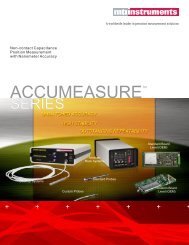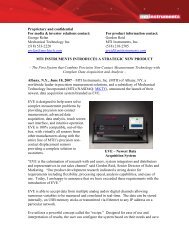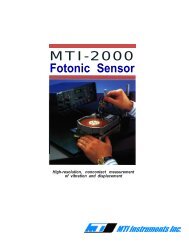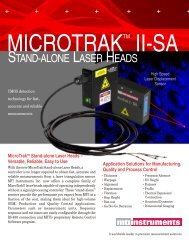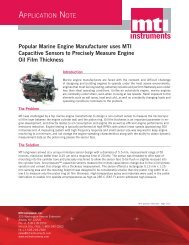APPLICATION NOTE: Laser Triangulation Sensors - MTI Instruments ...
APPLICATION NOTE: Laser Triangulation Sensors - MTI Instruments ...
APPLICATION NOTE: Laser Triangulation Sensors - MTI Instruments ...
You also want an ePaper? Increase the reach of your titles
YUMPU automatically turns print PDFs into web optimized ePapers that Google loves.
Figure 12: Vacuum Seal Integrity for Canning Industry<br />
Figure 13: Surface Profile of a Wide Variety of Materials<br />
iii.) Thickness and Dimensional Measurements<br />
On-line production thickness measurements have conventionally been made using direct<br />
contact type measurement systems. <strong>Sensors</strong>, such as LVDT’s, are positioned above and<br />
below the material being measured to track surface position. The sensor outputs are<br />
combined through software or a summing device and thickness is determined.<br />
Unfortunately, contact type methods cause measurement problems. Not only can the<br />
material being measured be damaged but sensor wear also occurs. In addition, contact<br />
sensors are slow and may not properly track targets that may move or vibrate, making<br />
these applications ideal for <strong>MTI</strong>I’s laser systems.<br />
Single sided thickness measurements are possible if one side of the material can be held<br />
constant against a fixed reference plane, however, for best results, two sided<br />
measurements are preferred. This is because a two sided approach eliminates any errors<br />
that might be introduced from the material moving or vibrating. <strong>MTI</strong>I’s two sensor<br />
approach synchronizes the data sampling for both sensors which ensures a correct


